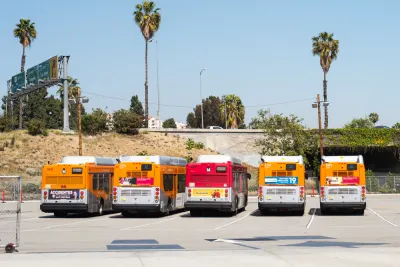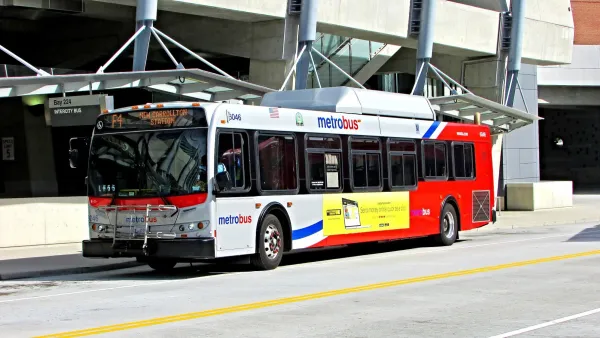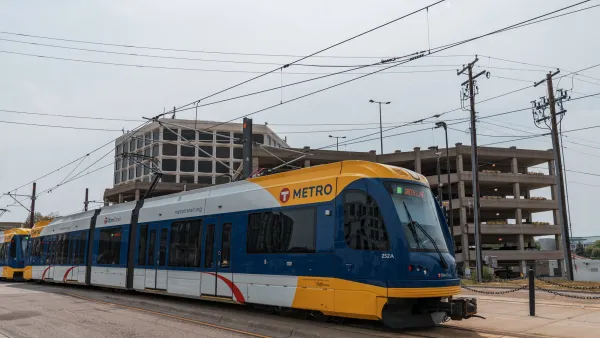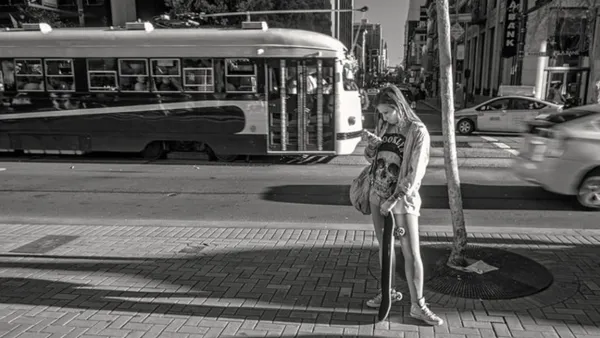Commitment gets tested when a dedicated urbanist, transit rider, and L.A. County planner is relocate to a suburban office. Clement Lau shares his thoughts about the good and the bad of riding an L.A. Metro bus.

For many urbanists, walking the talk regarding an urban, transit oriented life style while remaining gainfully employed means a reverse commute, i.e., commuting from a downtown home to a job in the suburbs. Such a commute can be more difficult to accomplish via public transit than a traditional commute. Nearly all cities are the center of local and regional transit lines, including light rail. On the suburban ends of such transit lines are often park-n-ride lots and connecting transit routes to capture suburban residents who don't live adjacent to the direct transit routes to urban centers. Of course, the "last mile" remains a conundrum in much of American transit commuting, but it is arguably worse for those having to accomplish a reverse commute. One's personal car can be used to address the first mile gap in a transit commute but not the last mile gap.
When transit user, downtown resident, and L.A. County planner Clement Lau's office was moved from Koreatown to Alhambra, his public transit commute became a rather time consuming multi-leg endeavor. His new Alhambra workplace is only reachable from downtown by using, at least part of the way, an automobile or bus. Nevertheless, his walk-subway-bus-walk commute has some hidden rewards. On the other hand, he has become fully aware of the hierarchy of public perception about transit modes, with buses occupying (unfairly) the bottom rung. Nevertheless, he believes there are some significant opportunities for improving the L.A. bus network, without major infrastructure expenditures. For example, improvement is needed in the areas of reliability, scheduling, and communicating with users, and getting real time information to them when there are delays. To read more of his observations and recommendations, please see the source article.
FULL STORY: Riding the Bus: The Good, the Bad, and the Ugly

National Parks Layoffs Will Cause Communities to Lose Billions
Thousands of essential park workers were laid off this week, just before the busy spring break season.

Retro-silient?: America’s First “Eco-burb,” The Woodlands Turns 50
A master-planned community north of Houston offers lessons on green infrastructure and resilient design, but falls short of its founder’s lofty affordability and walkability goals.

Delivering for America Plan Will Downgrade Mail Service in at Least 49.5 Percent of Zip Codes
Republican and Democrat lawmakers criticize the plan for its disproportionate negative impact on rural communities.

Test News Post 1
This is a summary

Test News Headline 46
Test for the image on the front page.

Balancing Bombs and Butterflies: How the National Guard Protects a Rare Species
The National Guard at Fort Indiantown Gap uses GIS technology and land management strategies to balance military training with conservation efforts, ensuring the survival of the rare eastern regal fritillary butterfly.
Urban Design for Planners 1: Software Tools
This six-course series explores essential urban design concepts using open source software and equips planners with the tools they need to participate fully in the urban design process.
Planning for Universal Design
Learn the tools for implementing Universal Design in planning regulations.
EMC Planning Group, Inc.
Planetizen
Planetizen
Mpact (formerly Rail~Volution)
Great Falls Development Authority, Inc.
HUDs Office of Policy Development and Research
NYU Wagner Graduate School of Public Service





























